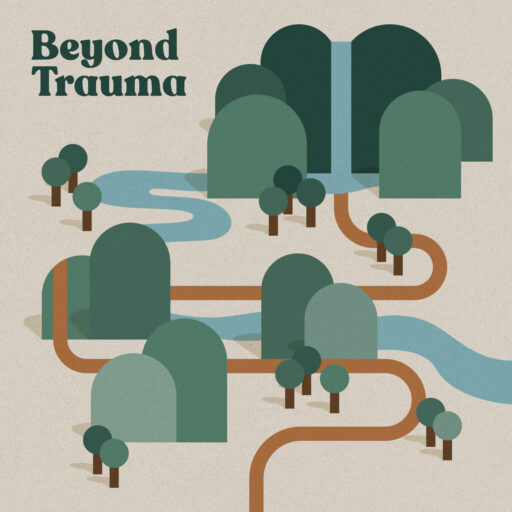Episode 14: Trauma and the Triune Brain

In this episode, we will continue our discussion on the parts and development of the brain, focusing on how the brain responds to trauma.
What is trauma?
- Anything that is too much too soon, too much for too long, or too little for too long.
- How do traumatic experiences shape the development and function of the brain?
Triune Brain
- Reptilian Brain
- Oldest part of the brain, evolutionarily speaking
- First part of the brain to develop
- Controls involuntary functions- heartbeat
- Innate ability to keep us safe
- Mammalian Brain
- Emotional areas of the brain
- Handles social connections
- Develops in the first 6 years of life
- Rational Brain
- Develops last in human brain development
- Youngest part of the brian, evolutionarily speaking
- Part of the brain that separates us from other animals
- Logical thinking, pattern recognition, mathematics
How does trauma impact all three areas of the brain?
- The symptoms of PTSD can all be related to trauma’s impact on the various areas of the brain.
Reptilian Brain
- The impact trauma has on the reptilian brain then impacts the other areas of the brain.
- When our system is exposed to trauma, the reptilian brain is affected first.
- Focused on survival and life maintenance of yourself and offspring
- Constantly detecting/ searching for threat (subconsciously)
- Reflexes come directly from the reptilian brain. So when we’ve experienced trauma, the reptilian brain lowers its threshold for perceiving threat.
- Neurception: the constant scanning for potential threat
- Our neuroception heightens after a traumatic experience.
- All of this is occurring at a subconscious level.
- Trauma can change the development and the response of our nervous system.
- When we’ve been through trauma, we are much more likely to develop an addictive pattern.
- Why?
- We are trying to suppress our heightened neuroception.
Mammalian Brain
- Houses the amygdala and the hippocampus
- Amygdala is the part of the brain that detects threat
- Hippocampus stores memories, including traumatic memories so that we remember how to respond to particular experiences.
- fight/flight/freeze
- Our brain and our nervous system is an electric system.
- When something in our nervous system is detected, the reptilian brain sends that information to the mammalian brain so we can either fight/flight/freeze.
- Sometimes the activation doesn’t stop in our amygdala after a traumatic event, or when it is activated, it’s at a much higher rate.
- Oftentimes people come to therapy long after the trauma occurred because we understand we may react differently after a traumatic event, but when it goes on for too long, we realize that what is trying to keep us alive is but it’s now becoming very inconvenient.
Rational Brain
- Trauma shuts down our rational brain.
- Our brain and nervous system doesn’t differentiate between a real threat and a triggering memory of a threat.
- When we are activated by something in our environment that reminds us of a traumatic experience, our body responds to it as if the trauma is really occurring.
- We don’t have the ability to make rational understanding or meaning to our behaviors during a traumatic experience or a reaction to trauma.
- Story follows state follows story
- Our rational brain tries to help but it makes some pretty profound mistakes along the way.
- The rational brain tends to favor being in control rather than telling the truth.
- Since our rational brain wants to be in control, when we begin to rationalize or tell the story of our experience, we begin to put the blame on ourselves. We do this so that we feel we were in control, and that maybe we can prevent it in the future.
- This can cause deep shame, which creates even more trauma.
- If I tell the story that blames the traumatic experience on yourself, it creates a sense of shame as well as avoidance from the world.
- This is how we can become very restrictive after a traumatic experience.
- On the contrary, if we don’t blame ourselves but the person or thing that caused our trauma, we can later be proud of our body and our capabilities. This helps relax and release fear.
- We can rationally understand trauma, but we also have to rewire the way our nervous system responds.
- We must give our body a chance to feel safety.
- Relational safety
- Emotional safety
- Physical safety
- “I wasn’t safe then, but I am now.”
- Choosing to open up to the ability to feel safe.
- It takes a lot of vulnerability and courage.
- Try with someone you trust- friend, therapist, partner, etc.
- Take your time with this, so that it will be a good experience for our body.



